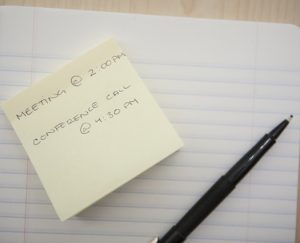
Are you looking to make that next meeting of yours super-productive?
Do you think the answer lies in working faster or having the latest technology at your fingertips?
Actually, the answer is quite simple and it all has to do with time…
In this post I’ll explain the key points you need to be aware of in order to make your next meeting a success.
Meetings are funny things.
You might just think of a meeting as people gathering together at the same time and place with the intent of working together on or towards something.
The fact is any meeting is actually composed of three separate moments in time.
Each of these three separate moments can make or break the outcome of a meeting.
You can’t have one without either of the other two if you want to run or hold a meeting that truly matters in the long run.
Here are the three separate moments:
- Time before the meeting
- The meeting itself
- Time directly after the meeting
Pretty simple stuff right? Yet many people only focus on the middle part, the meeting itself, and mistake it as the most important thing when it comes to talk of meetings and getting things done.
To make your next meeting flow, simply consider the three parts:
Time before the meeting
What to focus on: Why do you need to have or hold the meeting in the first place?
What is your goal in holding the meeting? What outcome or outcomes do you want to come out of it? Is it to brainstorm ideas, review information, come to a decision with others, or hold a project status update. Nothing else really matters (from a lavish refreshment spread to the latest audiovisual tools in the conference room) unless you have a good enough reason to hold your meeting in the first place. Otherwise you’re wasting your time and other people’s time in the process.
The meeting itself
What to focus on: Keep to the agenda and effectively manage time.
Now is not the moment to discuss matters unrelated to the meeting, have meeting attendees go off on long tangents or side discussions, or let the time slip through your fingers. You have scheduled a meeting to get things done. There’s nothing else do be done but to sit down and accomplish what you set out to do. Follow the agenda, keep attendees in check and make plans for the future, including next steps directly after the meeting.
Time directly after the meeting
What to focus on: What has been agreed upon during the meeting and any action steps that need to take place.
It’s not uncommon to have a meeting, have people agree to certain points and action steps and then have nothing happen or take place after said meeting. There’s no point in having a meeting if you can’t actively use what you’ve discussed or met upon in future. Review items discussed during the meeting, assign tasks to meeting attendees if they were not already assigned and make sure to put things in motion directly after a meeting.
How about you? What do you consider to be a productive meeting? Is it when the meeting covers all of your agenda items, stays on topic or effectively paves the way for things to get done in future? Join in the conversation and leave a comment below!





0 Comments